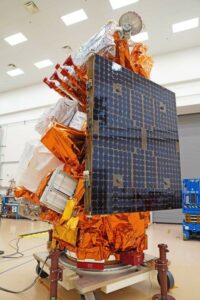Asatellite built by Northrop Grumman Corp. for the National Oceanic and Atmospheric Administration carries on it an instrument made in Los Angeles County.
Working out of the company’s Azusa campus’ Passive Microwave Center of Excellence, hundreds of employees on the program designed, built, integrated and tested the Advanced Technology Microwave Sounder, or ATMS, for use on the NOAA and NASA Joint Polar Satellite System-2 spacecraft.
The satellite, which studies global weather patterns, was launched last week aboard a United Launch Alliance Atlas V rocket.
Aaron Dann, vice president of strategic force programs at Northrop’s facility in Azusa, called the ATMS the “backbone” of NOAA’s national weather prediction program.
The ATMS measures microwave radiation from the Earth’s atmosphere and surface during the day and night regardless of cloud cover, according to a release from Northrop.

It can provide global temperature and moisture profiles and track humidity changes, Dann said.
“We can also look at wind and measure ice and snow across the globe,” he added.
There are many instruments that can see the Earth’s atmosphere, but not many that can see through the atmosphere as ATMS does, Dann continued.
That capability is what makes it the backbone of the key underlining data of these weather prediction models and the ability to be able to see through the layers of the atmosphere and how the storms are forming and changing, he said.
“Understanding how the temperature and the moisture profiles are changing throughout the atmosphere and through these storms is important data to provide to our weather model and forecasters who are understanding how these storms are forming, how they are moving and what impact they may have,” Dann added.
The ATMS has been used on two previous satellites – the Suomi National Polar-orbiting Partnership craft operated by NOAA launched in 2011 and still operating, and the Joint Polar Satellite System-1 spacecraft, also known as NOAA-20, sent into space in 2017.
Steve Krein, vice president of civil and commercial space at Northrop, said that the ATMS on the JPSS-2 improves on NOAA-20’s broadcast capacity by allowing any ground system around the world to receive data in real time.
“(It allows) NOAA to receive global data and distribute it to activate emergency preparedness and protect lives,” Krein said in a statement.
Dann added that the ATMS system was key to long-range weather forecasting of more than five to 10 days out.
“You can anticipate where these storms will land and to be able to get early warning out and be able to respond to these storms is really critical,” Dann said.
The Azusa campus, part of Northrop’s aeronautics systems division, employs about 1,000 workers.
